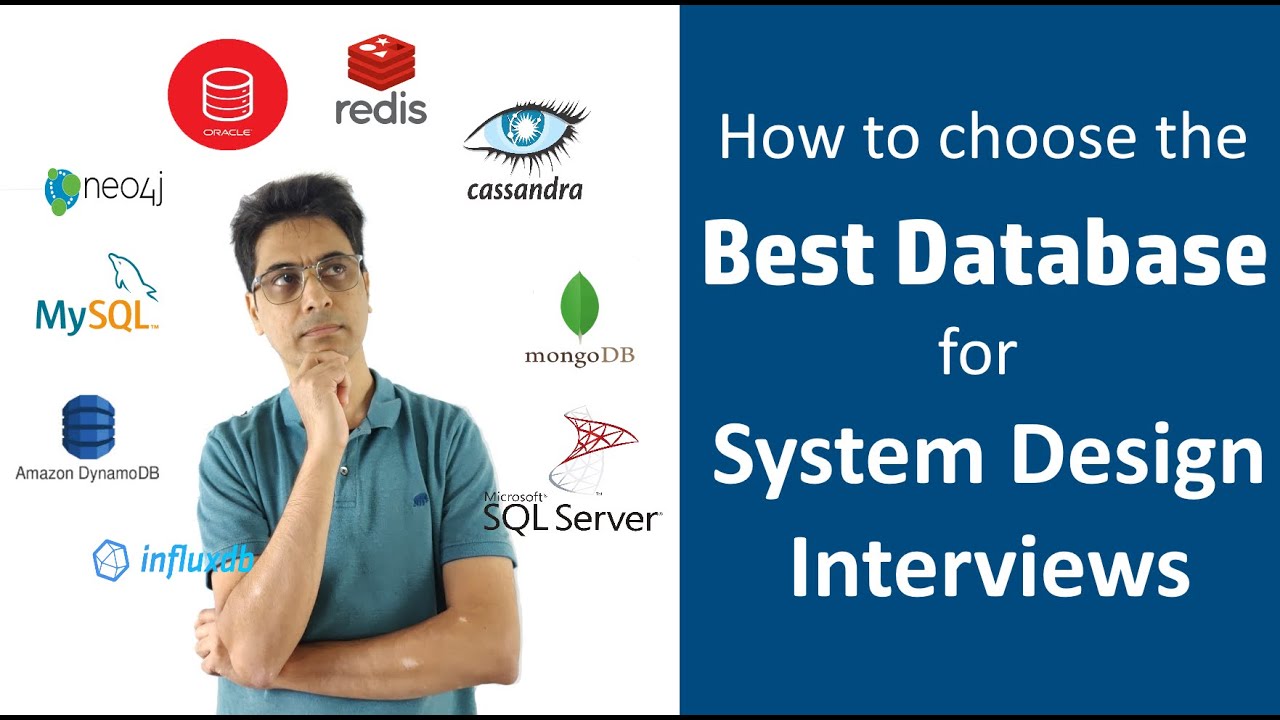AWS - Database Services
Summary
TLDRThis video script discusses AWS's database services, highlighting both relational and NoSQL options. It covers basic services like RDS (Relational Database Service), where users can choose various database types such as PostgreSQL, Aurora, Oracle, and Microsoft SQL Server. It also introduces DynamoDB, a NoSQL solution designed for applications that require high-speed, real-time data handling. These services are popular for their flexibility and usage across various solutions. The focus is on providing easy-to-implement database solutions tailored to different application needs and scaling requirements.
Takeaways
- 😀 AWS offers a range of database services, including basic and more complex solutions.
- 😀 The basic database services include relational databases like RDS, which supports various server types such as Postgres, Aurora, Oracle, and Microsoft SQL Server.
- 😀 RDS (Relational Database Service) allows you to create instances with different types of servers based on your needs.
- 😀 Pricing for AWS RDS is based on the usage of the instances created, meaning you pay according to how much you use the service.
- 😀 AWS also provides NoSQL database services, such as DynamoDB, which is designed for fast performance and real-time data processing.
- 😀 DynamoDB stores data in key-value pairs and can handle data in formats like JSON.
- 😀 AWS's database solutions, including RDS and DynamoDB, are commonly used in many solutions for various business needs.
- 😀 These database services are particularly popular for applications that require fast data retrieval and scalability.
- 😀 AWS provides easy integration of their databases into applications, ensuring streamlined operation and performance.
- 😀 Both relational and NoSQL databases in AWS are widely adopted due to their efficiency and ease of use.
Q & A
What is AWS RDS?
-AWS RDS (Relational Database Service) is a service that allows you to create and manage relational databases such as PostgreSQL, Aurora, Oracle, and Microsoft SQL Server. You can specify the type of server you want and are charged based on the usage of the database instance.
What types of databases can be created using AWS RDS?
-AWS RDS supports multiple types of relational databases, including PostgreSQL, Aurora (AWS's own relational database engine), Oracle, and Microsoft SQL Server.
How is AWS RDS charged?
-AWS RDS is charged based on the usage of the database instance, meaning that the cost depends on factors like the instance size and the type of database engine you use.
What is AWS DynamoDB?
-AWS DynamoDB is a NoSQL database service that is designed for applications requiring high performance and low latency, particularly those that need real-time data. It stores data in key-value pairs and is suitable for fast, scalable applications.
How does AWS DynamoDB store data?
-AWS DynamoDB stores data in key-value pairs, which can be viewed as JSON-like objects. This allows for flexible and fast data retrieval, making it suitable for applications that need quick access to large amounts of data.
What type of applications would benefit from using AWS DynamoDB?
-Applications that require rapid data access and real-time updates would benefit from using AWS DynamoDB. It's particularly useful for applications with high performance requirements and low latency, such as mobile apps or web services that handle large amounts of dynamic data.
What is the difference between AWS RDS and AWS DynamoDB?
-AWS RDS is a relational database service supporting structured data and SQL queries, while AWS DynamoDB is a NoSQL database designed for high performance with unstructured data and rapid access. RDS is ideal for traditional database needs, while DynamoDB is better suited for applications requiring scalability and low-latency access to key-value data.
Can both AWS RDS and AWS DynamoDB be used in the same application?
-Yes, it is possible to use both AWS RDS and AWS DynamoDB in the same application. You might use RDS for structured data that requires complex querying and DynamoDB for high-performance, real-time data needs.
What are the main advantages of using AWS DynamoDB?
-The main advantages of AWS DynamoDB are its scalability, low-latency performance, and flexibility in handling large amounts of data. It's a fully managed service, which means that AWS takes care of maintenance, backups, and scalability, allowing developers to focus on building applications.
How does AWS handle database management for RDS and DynamoDB?
-For both AWS RDS and DynamoDB, AWS manages the underlying infrastructure, including backups, patching, and scaling. Users are responsible for managing their databases, but AWS handles most of the operational overhead, such as provisioning hardware, ensuring availability, and performing backups.
Outlines

Cette section est réservée aux utilisateurs payants. Améliorez votre compte pour accéder à cette section.
Améliorer maintenantMindmap

Cette section est réservée aux utilisateurs payants. Améliorez votre compte pour accéder à cette section.
Améliorer maintenantKeywords

Cette section est réservée aux utilisateurs payants. Améliorez votre compte pour accéder à cette section.
Améliorer maintenantHighlights

Cette section est réservée aux utilisateurs payants. Améliorez votre compte pour accéder à cette section.
Améliorer maintenantTranscripts

Cette section est réservée aux utilisateurs payants. Améliorez votre compte pour accéder à cette section.
Améliorer maintenant5.0 / 5 (0 votes)






